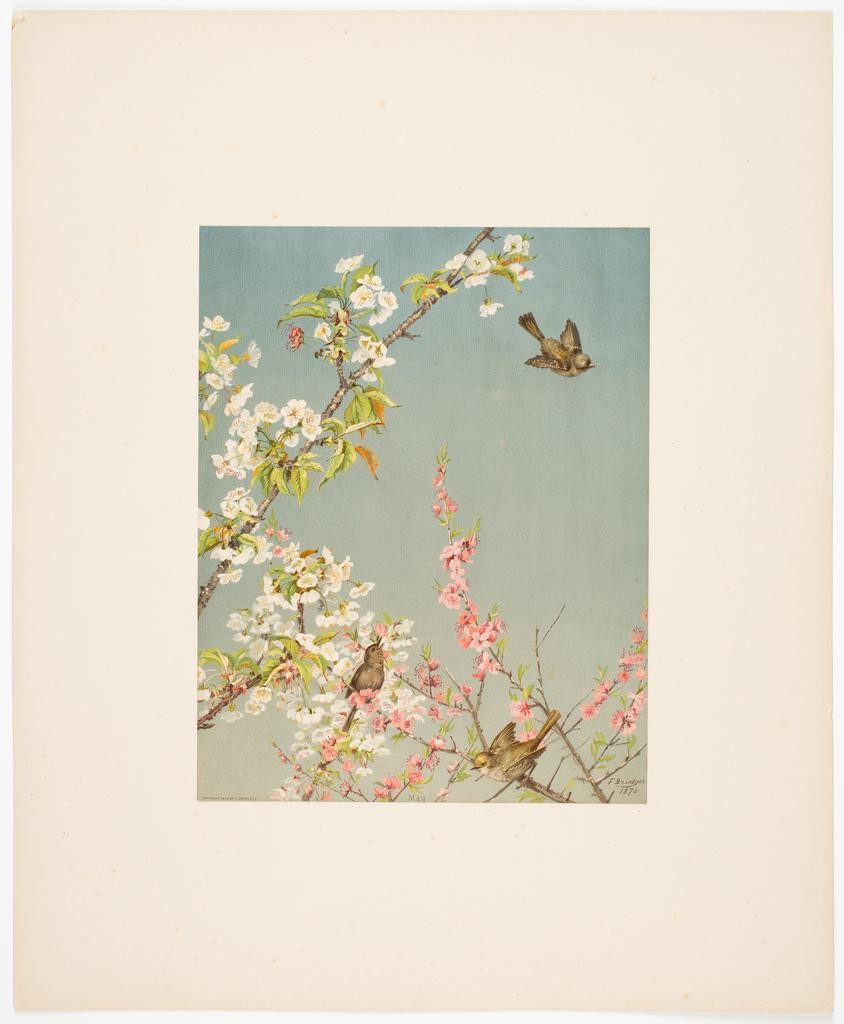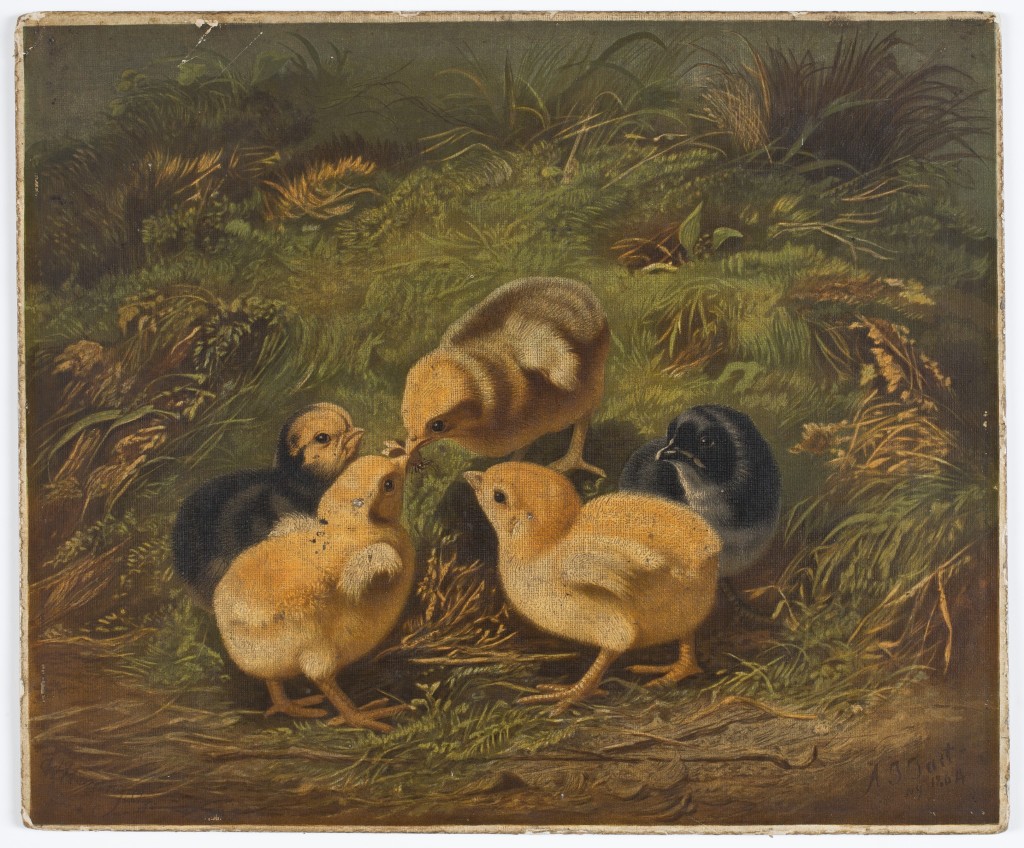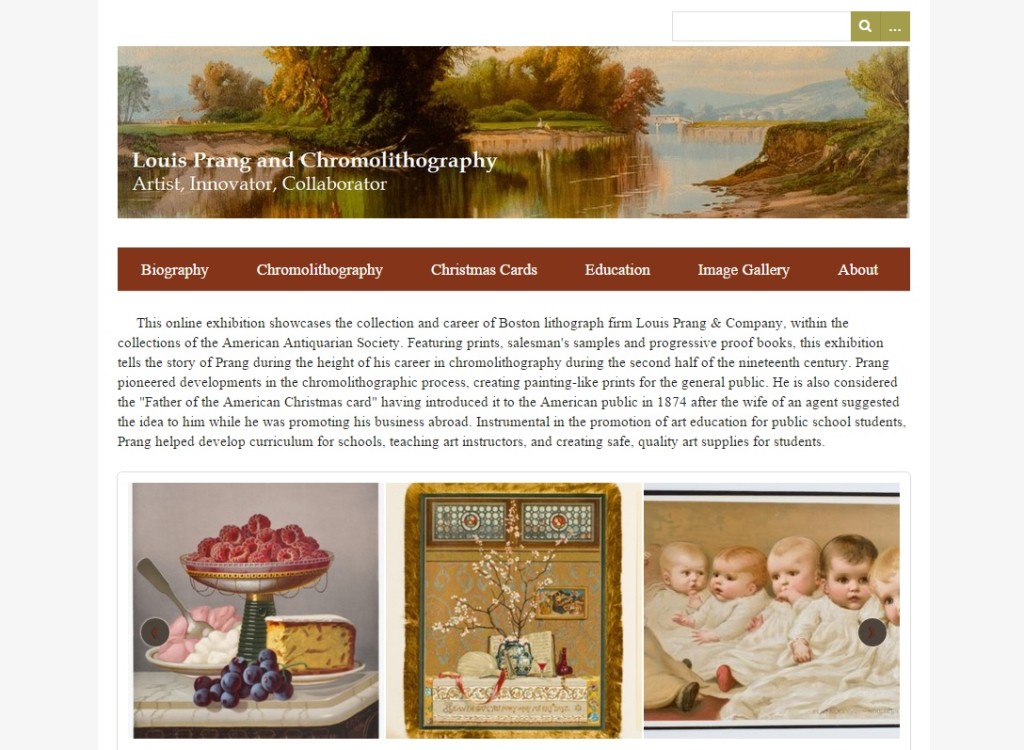
When I started working at AAS nine years ago, I did not know much about American prints and printmaking. Lithography and engraving were never the focus of my art history classes. And I only knew Currier & Ives from the prints my mother had hanging in every room in the house, and they were not my cup of tea. When I began as the visual materials cataloger, I quickly delved into the world of nineteenth-century prints, learning the difference between a wood engraving and intaglio engraving, and the difference between a colored lithograph and a chromolithograph. It was also at this time that I discovered the work of Louis Prang, the most famous Boston lithographer in the second half of the nineteenth century. I did not understand why Currier & Ives landscapes were more popular than Prang’s, whose prints looked like rich oil paintings. When I cataloged the Prang Collection in 2010, I always knew I wanted to do more with it.
I began a master’s program at the Harvard University Extension School in Museum Studies in 2010 (and will be graduating this week!), and created a mock exhibit for one of my classes which focused on AAS’s Prang material. Besides prints and advertisements, the AAS collection features progressive proof books, salesman’s sample books, and art education text books. Nothing ever came of the project, and it was not until last fal,l when the Harvard program switched their final assignment from a thesis to a capstone project, that I thought about reviving the Prang exhibition idea. Luckily for me, AAS was looking to create more online exhibitions for the website, and was going to use the online web-publishing program Omeka to do it. After an intensive two-day workshop led by Omeka web-developer Ken Albers, I was easily able to create a simple, yet informative exhibit about the work of Louis Prang, using the materials here at AAS.

 The exhibition details the major aspects of Prang’s career from 1850 to 1900. It begins with a look at his development of the chromolithograph process and how a chromo is made, and features what Prang considered the pinnacle of his career, a 116 sheet chromolithographed set of Oriental vases from the collection of William T. Walters in Baltimore, completed in 1897. Prang is responsible for introducing the Christmas card to America in 1875, and the competitions he held in the 1880s to come up with new designs are discussed. Lastly, Prang, along with his second wife Mary Dana Hicks, was a driving force behind giving public school students a quality art education, and examples from the text books published by Prang are given. An image gallery features almost forty of the best chromolithographs by Prang in the AAS collection, so scroll through and enjoy!
The exhibition details the major aspects of Prang’s career from 1850 to 1900. It begins with a look at his development of the chromolithograph process and how a chromo is made, and features what Prang considered the pinnacle of his career, a 116 sheet chromolithographed set of Oriental vases from the collection of William T. Walters in Baltimore, completed in 1897. Prang is responsible for introducing the Christmas card to America in 1875, and the competitions he held in the 1880s to come up with new designs are discussed. Lastly, Prang, along with his second wife Mary Dana Hicks, was a driving force behind giving public school students a quality art education, and examples from the text books published by Prang are given. An image gallery features almost forty of the best chromolithographs by Prang in the AAS collection, so scroll through and enjoy!
